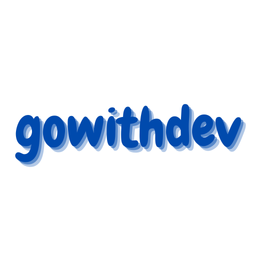Job Search Basics - Part 1: Resume Preparation

Getting or changing a job can be challenging at times. In this post, I'll share some tips based on my personal experiences and insights gathered from my friends journeys.
Resume Preparation
Creating a strong and targeted resume is crucial. Often, resumes are filtered by automated systems or bots, resulting in many being screened out. The first and foremost step is to ensure that your resume can be parsed by Application Tracking Systems (ATS). These systems extract details such as your professional experiences, education, achievements, and personal information. They also identify keywords in your resume to determine how closely it aligns with the job description.
Choose the right template
Resume template should be simple and minimalistic. You can create your own template or get started by using the default resume templates in Microsoft Word or Google Docs. Try to stay away from two column layouts as some ATS systems have issues parsing them.
- Keep it Clean and Readable: Ensure your template is easy to read with a clear hierarchy (e.g., headings, bullet points). This makes it easy for both ATS systems and hiring managers to quickly scan.
- Use Standard Fonts: Stick to fonts like Arial, Calibri, or Times New Roman. Avoid decorative fonts, as they can hinder ATS parsing and readability.
- Avoid Graphics and Images: While they may look good, ATS systems can’t read images, logos, or graphics. Stick to text-based content for best results.
- Prioritise Key Information: Place your most important information, like skills and work experience, at the top of the document where ATS can easily capture them.
- Save in the Right Format: Save your resume as a .docx or .pdf file. These formats are generally more ATS-friendly than others like .txt or .rtf.
Sections
Keep your resume concise, ideally 1 page, or up to 1.5–2 pages for exceptional cases. Avoid irrelevant sections that don't align with the job you're applying for. A typical resume should include the following sections:
- Personal and Contact Info: Your full name should be prominently displayed at the top of your resume. Include essential contact details such as your email address, phone number, and city. Additionally, provide relevant social media or professional links, like your LinkedIn profile or GitHub, depending on the nature of the job. This makes it easier for recruiters to reach out and review your work or professional background.
- Summary: Keep the summary short and to the point. It should provide a quick overview of your capabilities and how well you align with the job. Use quantifiers when possible to make it more impactful.
- Professional Experience: For each job, list the company name, location, your role, and the duration. Include a bullet list of your responsibilities, impact, and key projects. Use reverse chronological order (most recent to oldest).
- Projects / Academic Projects: If you are a fresher, list academic projects or any relevant side projects. These demonstrate practical skills and show how you’ve applied what you’ve learned.
- Education: For professionals, only include your highest level of education. Freshers can include earlier qualifications if they have less content on their resume.
- Skills: Focus on the skills that are most relevant to the job you're applying for. Exclude unrelated skills to keep the resume focused and relevant.
- Certifications: Include professional certifications that add value. Freshers can include certifications from platforms like NPTEL, Coursera, or other relevant courses.
- Achievements: Highlight any significant accomplishments like top ranks in courses or winning hackathons. These showcase your passion and success in challenges beyond the classroom or workplace.
- Extracurriculars and Volunteer Work: If you have room and they are relevant, you can add a section for extracurricular activities or volunteer experience that demonstrates skills like leadership, teamwork, and community involvement.
Attention to detail
Consistency is crucial when crafting your resume. Small details can make a big difference. Pay attention to:
- Font Size & Style: Stick to a clean, readable font (e.g., Arial, Calibri) and maintain consistent font sizes throughout the document.
- Punctuation: Be consistent with punctuation, especially at the end of bullet points. If you use periods in one point, apply them to all bullet points.
- Date Formats: For consistency, maintain the same date format throughout your resume. For example, if you write "May 21 - July 23" for one job, use the same format for all other job durations.
Additionally, ensure your layout is clean and easy to read:
- Alignment: Properly align headings, bullet points, and section titles to enhance visual appeal and readability.
- Spacing: Adequate spacing between sections and margins is essential. Too little space can make your resume look cluttered, while too much can make it appear unbalanced.
Action Verbs: Instead of using generic phrases like "responsible for," use dynamic action verbs like "led," "created," "optimized," or "spearheaded" to give your resume more impact and energy.
File Name: Use a clear and professional file name to make your resume easily identifiable. The recommended format is "YourName_Resume_YYYYMMDD". For example: DevaKumarKilim_Resume_20241125.pdf.
Avoid Unnecessary Capitalisation & Abbreviations: Stick to standard terminology to ensure clarity. Avoid using abbreviations or excessive capitalization that could confuse both ATS systems and human readers.
Quantify your achievements
Recruiters are often more interested in the impact you've made than just listing your responsibilities. Whether from a professional experience or an academic project, always aim to quantify your achievements. For instance, you could mention:
- The size of the team you led: "Led a team of 5 engineers to deliver a product within tight deadlines, improving team efficiency by 30%."
- The number of requests handled by an app you built: "Developed a scalable app that processed over 1 million daily requests with a 99.9% uptime."
- The impact on sales or performance: "Contributed to a 25% increase in sales by optimising the user experience on the platform."
By showcasing measurable results, you highlight the value you've added in previous roles, making it easier for recruiters to see how you can contribute to their company’s success. Quantifying achievements not only strengthens your resume but also demonstrates your potential in a clear, tangible way.
Highlight both soft and hard skills
Soft skills are just as important as hard skills when it comes to impressing recruiters. These include leadership, mentoring, responsibility, teamwork, communication, and management abilities. While it's often challenging to explicitly list these skills in your resume, you can highlight them through strong and impactful language in your professional experience, academic projects, and other sections.
For example:
- Leadership Skills: "Led a cross-functional team of 5 engineers to develop and launch a new feature, resulting in a 20% increase in user engagement."
- Teamwork & Collaboration: "Collaborated with multiple departments to ensure seamless product delivery and reduced project delays by 15%."
- Communication: "Effectively communicated project status and challenges to stakeholders, ensuring transparency and alignment."
- Mentoring: "Mentored 3 junior developers, improving their coding skills and reducing bug reports by 30% within 6 months."
By weaving these soft skills into the descriptions of your professional experience and accomplishments, you can demonstrate your ability to contribute to both the technical and interpersonal aspects of a team.
Target the Job Description
Carefully analyse the job description and tailor your resume accordingly. Highlight the skills and experiences in your professional background that directly align with the job requirements. While it may be tempting to use the same resume for multiple positions, taking the time to customise it for each job can significantly increase your chances of being shortlisted.
You can use tools like Resume Worded or JobScan to assess how well your resume matches the job description. These platforms offer free services up to a certain limit, but I would recommend avoiding paid subscriptions unless necessary. Additionally, text-generating AI tools like ChatGPT or Gemini can also help you evaluate the alignment of your resume with the job description by analysing key skills and keywords.
By tailoring your resume to the specific job, you improve its chances of passing through ATS filters and catching the attention of recruiters.
Resources
- r/resumes: This is a sub-reddit. The wiki contains some suggestions and rules for writing a good resume.
- resume-builder: A simple, JSON-based resume builder. You can provide the JSON and job description to ChatGPT or Gemini, and easily receive an updated resume in JSON format. Paste the modified JSON here to download your personalised resume effortlessly.
In the next section, we'll explore where to find job opportunities and the roles that align with your skills and career goals.


